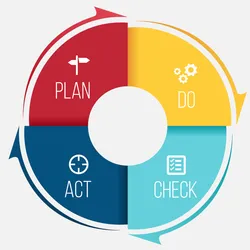A key source of data and truth for a lab is its laboratory information management system (LIMS). Effectively implementing a powerful LIMS enables lab managers to make better, faster, and more effective data-driven decisions. The 2024 Veeva R&D and Quality Summit, held in Boston, featured a panel discussion focused on the decisions involved in evaluating, adopting, and implementing a cloud-based LIMS with the goals of improving right first time (RFT) and GMP compliance.
The panelists were Luis Negron (LN), the quality control (QC) analyst at an emerging gene therapy company, and Chris Manoogian (CM), the former associate director of internal QC at Verve Therapeutics. The panel was moderated by Scott Hanton, the editorial director at Lab Manager.
Q: Once you identified that you wanted to adopt a new LIMS, what were the key things you needed?
CM: We needed accessibility for everybody—the QC group, QA, regulatory, and other folks who need to view the data. We also wanted a system that could easily share content and data with other applications. To have everything accessible within a single source, minimizing the need to search to find information, link it, and trace it. That is what drew us to Veeva.
LN: We were looking for a system to improve sample management because all our batches have hundreds of samples. We also wanted a place where the data is available to everyone, not only for the QC folks doing the analyses but also [for] the QA part of the team making release decisions.
Q: Could you get everything you wanted in terms of key capabilities from the application?
CM: I want everything in the system from start to finish. I want the release testing, I want the stability, and I want it all to speak to each other. I want it to be a complete system that can execute end-to-end processes.
LN: A scalable system was important since I also feel we are growing with it. If we ever want a feature or capability, we ask for it, and the Veeva team is very open on how to make it work for us. They make sure that the system can do what we need in the QC lab. We're very happy with the outcome.
Q: How did you make the case internally for adopting a cloud-based LIMS?
LN: We decided to go with a cloud-based LIMS because we are growing and need a system that can help improve productivity and execute right the first time. That's how we justified the project to the management team.
CM: For us, the situation is very similar to what Luis explained. Also, learning from my experience, it takes a lot to maintain a LIMS. So, for a small to midsize company like Verve, you must be very smart and strategic. This is one reason we explored a cloud-based LIMS.
Q: Why did you choose Veeva as your LIMS partner?
LN: We are already using the Veeva Vault ecosystem. We use their quality management system (QMS) and quality document management application. Based on our positive experience implementing those systems, we trust Veeva and our partnership. By adding a LIMS that is on the Veeva Vault Platform, it feels familiar to the users and they don't have to learn a whole new system from scratch.
Lab Quality Management Certificate
The Lab Quality Management certificate is more than training—it’s a professional advantage.
Gain critical skills and IACET-approved CEUs that make a measurable difference.
CM: One thing that we really liked when exploring Veeva Vault LIMS was that it is unified with the other Veeva applications. You can ensure that your analysts are trained on the method prior to execution. You can have your procedure on one side of the screen, and your result entry screen on the other half, and everything links and works together. If you have an out-of-specification (OOS) investigation, you can link everything in Vault LIMS instead of going from one system to another.
Q: How quickly did you get up and running with Vault LIMS?
CM: From when we first started thinking about evaluating LIMS to when we went live, it was about a year. That's the evaluation of three vendors, working with the folks at Veeva, defining what we needed and wanted, designing our system, reviewing the IQ and OQ of the system, and then performing all of the process qualifications.
LN: For us, it was about 10 months from business process discussion to testing and system validation.
Q: What were your biggest concerns going into the project?
LN: The biggest concern was that LIMS was a relatively new space for Veeva. One of the advantages of being an early adopter is that Veeva was really open to hearing our feedback and collaborating with our team to configure the system in a way that would work most optimally for our lab.
CM: One concern that we had was the expertise, but Veeva was very good. We didn't have to worry about how to design our system or meeting regulatory requirements.
Q: What were your most pleasant surprises?
CM: The amount of organization and project management driven by Veeva themselves. They kept to the timelines and kept us on track.
LN: I think the openness of the Veeva consultants to implement the system. Whenever we had a request, they made it work. I'm glad we are collaborating to help make the application better.
Q: What are your future plans for LIMS?
CM: The future plans are to add every method that we have in-house into Vault LIMS. We would also like to have all the consumables and reagent preparations built into the system, and key aspects of our equipment, like dates and calibration documents. We’d also like it to hold all our stability information. We’d like to have the entire study there so we can focus on batching strategies and make our lab as efficient as possible.
LN: Our next big project for the system is to implement the stability module. That will change a lot of what we do. Having everything integrated within the LIMS and having all the stability pulls scheduled automatically will improve a lot of the QC workstream. Also, we want to keep up with the latest product releases Veeva issues three times a year. Every time there's a new release, new features become available that we can use to optimize our lab.
Q: What is the one thing that you would advise a QC leader to think about when implementing a cloud-based LIMS?
LN: Identify your subject matter experts (SME) from each area. Get at least one or two SMEs from each area and collaborate with them to configure the system in a way that can meet their needs.
CM: Define your needs and know what you want. Take advantage of the fact that Veeva is always working on new features for its LIMS. Many of us know what we want, and they are building those features and capabilities with consideration to customer feedback and requirements.



















